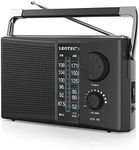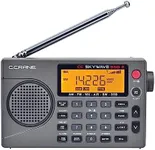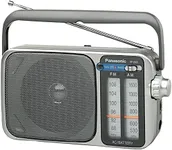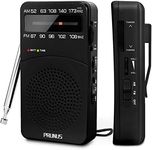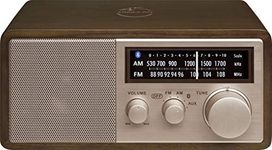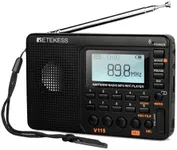Buying Guide for the Best Am Reception Radios
Choosing the right AM reception radio can make a big difference in how clearly you hear broadcasts, especially if you live in an area with weak signals or lots of interference. When shopping for an AM radio, it's important to think about where and how you'll use it—whether it's for listening at home, on the go, or during emergencies. Understanding the key features will help you find a radio that matches your needs and ensures you get the best listening experience.AM SensitivityAM sensitivity refers to how well the radio can pick up weak or distant AM signals. This is important because a more sensitive radio will allow you to hear stations that are farther away or have weaker signals, which is especially useful if you live in rural areas or want to listen to out-of-town broadcasts. Radios are often described as having 'high,' 'medium,' or 'low' sensitivity. High sensitivity is best for those who want to catch as many stations as possible, while medium sensitivity is usually enough for city dwellers with strong local stations. If you only listen to strong, local stations, low sensitivity may be sufficient.
SelectivitySelectivity is the radio's ability to separate one station from another, especially when stations are close together on the dial. This matters if you live in an area with many stations or if you notice interference between channels. Radios with high selectivity can clearly separate stations that are close in frequency, reducing overlap and static. If you often hear two stations at once or have trouble tuning in clearly, look for a radio with better selectivity. For casual listening in areas with few stations, basic selectivity is usually enough.
Antenna TypeThe antenna is what helps the radio receive signals, and its type and quality can greatly affect reception. Some radios have built-in ferrite rod antennas, which are good for most indoor use, while others allow you to connect an external antenna for even better reception. If you plan to use the radio in a building with thick walls or in a basement, or if you want to improve reception, consider a model that supports external antennas. For portable or casual use, a built-in antenna is usually sufficient.
PortabilityPortability refers to how easy it is to carry the radio around. Some AM radios are small and lightweight, making them easy to take on trips or use outdoors, while others are larger and designed to stay in one place. If you want a radio for travel, emergencies, or outdoor activities, look for a compact, battery-powered model. For home use, a larger radio with better sound and reception might be a better fit.
Power OptionsPower options describe how the radio is powered—by batteries, AC power (plugged into the wall), or both. Battery-powered radios are great for emergencies or outdoor use, while AC-powered radios are convenient for home listening. Some radios offer both options, giving you flexibility. If you want a radio for emergency preparedness, make sure it can run on batteries. For regular home use, AC power is usually more convenient.
Audio QualityAudio quality is about how clear and pleasant the sound is from the radio. Some radios have larger speakers or better sound processing, which can make voices and music sound clearer. If you plan to listen for long periods or enjoy music, look for a radio with good audio quality. For quick news updates or emergency use, basic audio quality may be enough.
Tuning MethodTuning method refers to how you select stations—either with a manual dial or digital buttons. Manual dials give a classic feel and can be easier for fine-tuning, while digital tuning offers more precise station selection and often includes features like presets. If you like quickly switching between favorite stations, digital tuning with presets can be helpful. If you prefer a traditional experience or want to fine-tune weak signals, a manual dial might be better.



